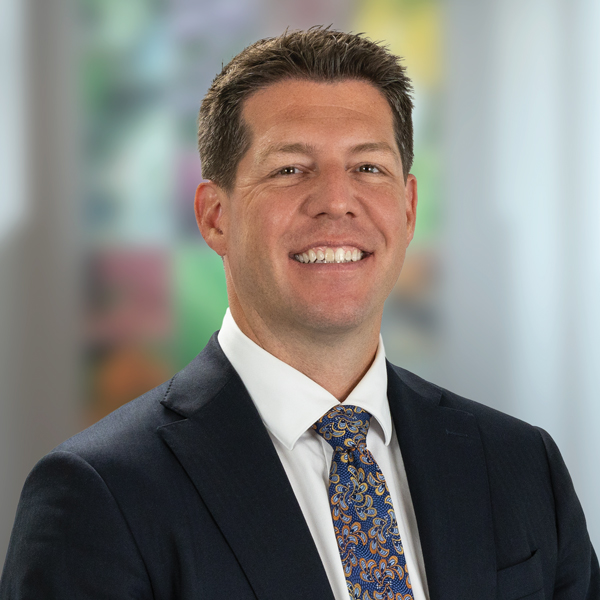Our goal is to get you back to 100% and playing at peak performance.
At Griffin Hospital, we understand the competitive spirit of our patients, and we know that even the slightest sports-related injury can throw you off your game. Our Griffin Health Sports Medicine program has the best specialists in the region and all of the tools needed to perform cutting-edge procedures with less post-op pain, getting you back in the game quicker. Whether you are a professional athlete or a weekend warrior, the Griffin Sports Medicine team will see you through evaluating and repairing your injury as well as up-to-date therapeutic and rehabilitative services. We’ll get you back to peak performance physically and mentally.

Patient Care Navigation
Having someone on your side, helping you navigate the course of your care and treatment, can make things a little easier.
Our Patient Care Navigator is an experienced nurse who knows all about orthopaedic care and does everything possible to make your diagnosis and treatment understandable and less stressful. She is committed to helping you navigate all aspects of your care.

Hi there! My name’s Amy Gagne.
I’m your Orthopaedic Care Specialist. I’m here to help guide you through this process – if you have any questions, send me an email or call 203-732-7524.
Overview
A healthcare provider for both game day and the day-to-day
Your primary care physician promotes your general wellness and keeps you feeling healthy from one day to the next. If sports and exercise are a regular part of your life, or you’d like to make them a part of your life, then a physician who understands your active lifestyle can provide you with specialized care that fits your needs.
Sports medicine physicians are board certified in family, pediatric, or internal medicine like all primary care physicians, but also hold a Certificate of Added Qualification in Sports Medicine. A sports medicine physician is the perfect choice for those who wish to receive excellent primary care that supports their active lifestyle.
Injury Prevention and Rehabilitation
Even with the best treatment, injuries can leave you out of the game or your routine for extended periods of time. A sports medicine physician can offer nutrition plans or auxiliary exercises that help prevent injuries before they occur. Their recommendations will be tailored to your unique lifestyle and medical history. If you do happen to get injured, your sports medicine physician will know your goals and lifestyle. With their expertise in both sports medicine and your health, they can maximize the benefit of non-operative treatment options.
Holistic Health
Maintaining your health is about more than diagnosing diseases and curing infections. Fitness and nutrition can make all the difference in preventing or managing disease. A sports medicine physician will help you understand how nutrition and exercise can fit into your treatment of chronic or acute diseases. If you’re looking to get active or begin an exercise program, your physician can help and guide you at every step along the journey to your goals.
A Doctor That Specializes in You
Your primary care physician is a long-term—sometimes lifelong—health relationship. They are an expert on your medical history, making them the best candidate to provide you with individualized care. Does your running form tend to exert one hamstring more than the other? Are you a swimmer in the summer but a skier in the winter? A sports medicine physician won’t just know how the body works but how your body works.
Return To Peak Performance
The Sports Medicine Department at Griffin Hospital treats the following conditions:
- Broken Bones
- Cartilage Tears
- Foot and Ankle Injuries
- Knee Injuries
- Ligament tears
- Muscle Strain
- Muscle Tears
- Reconstruction
- Shoulder and Elbow Injuries
- Tendon tears
Call The Sports Medicine at Griffin Hospital at (203) 732-1260.
Condition & Treatment Digest
Some tips that can help with your condition and treatment:
-
Tips for Easing Back into Working Out
The days are getting longer, the sun is feeling warmer, and suddenly you realize bathing suit weather is right around the corner but you haven’t been working out! If you are like most people, you break out your running shoes and jump right in to an intense workout. Then about a week later you are injured and have to stop. Instead of shocking your body and risking injury, why not try these tips and tricks to ease back into an exercise routine pain-free. You’ll have that summer body and still be able to enjoy the warm weather healthy and fit.
Set a goal – Before beginning any journey, it’s important to know your destination. Decide what your goals are ahead of time so you can map the path to get there. Do you want to add muscle, get faster, or tone up? Knowing these things will help guide you to your goal.
Start slow – If you were running consistently in the past, your body may have been comfortable at a certain pace. But if it’s been awhile, it is always better to go a little slower until your body has adapted to running again. By starting slower, you prevent those overuse injuries from creeping up.
Warm up – Even though temperatures start rising in the spring, you still need to warm up your body before doing any intense activity. If you are training outside, start with 5 to 10 minutes at a lower intensity to let
Lighter weights – It seems obvious, but if your body has been inactive for a while, your muscular strength will have decreased. Try starting with 50 to 60 percent of what your peak weights were.
Do half time – Start with less reps or do just half the amount of sets as you did before. If your muscles are not used to lifting weights, you’ll likely be sore the next couple of days. By doing half the volume, you’ll cut down on that soreness so you can be back in the gym sooner.
Work with a coach – Having someone coach you can help you train smarter and avoid injury. You can workout with a personal trainer or join a sports team. Working with an expert is the best way to ease back into your fitness routine.
Know your limits – This means listening to your body. If something doesn’t feel right, take a break. Check in with yourself. How am I feeling? Do I feel any sharp pain? It’s OK to be cautious when you’re restarting a routine.
-
Though Common, Not All Dislocated Shoulders Are the Same
A common shoulder injury for athletes is shoulder instability or a shoulder dislocation. Depending upon the severity, this injury can be a simple fix or involve surgery.
What is a Shoulder Dislocation?
A shoulder dislocation occurs when the head of the humerus (upper arm bone) pops out of the shallow shoulder socket of the scapula (called the glenoid). This can happen when a strong force pulls the shoulder upward or outward, or from an extreme external rotation of the humerus.
Dislocation can be full or partial:
Partial dislocation (also called subluxation) is where the head of the humerus slips out of the socket momentarily and then snaps back into place.
Full dislocation involves the head of the humerus coming completely out of the socket.
“Shoulder injuries are frequent in contact sports like football,” said Orthopaedic Surgeon Jeffrey Klauser. “When the ball in the shoulder socket dislocates, it can cause damage to the soft tissue that surrounds the socket – called the labrum – which helps keep that ball and socket together. And when that’s torn, unfortunately, that can lead to recurrent dislocations down the line.”
Symptoms of a shoulder dislocation include pain (often severe), instability and weakness in the shoulder area, inability to move the shoulder, swelling, bruising, shoulder contour appears abnormal, and numbness and tingling around the shoulder or in the arm or fingers.
Treatment Options
The doctor will move the head of the humerus back into the shoulder joint socket by applying traction to the arm. Patients will wear a sling or a device called a shoulder immobilizer to keep the shoulder from moving initially to help with pain and improve stability. Surgery is often needed for a shoulder that dislocates repeatedly or if there is a tear in the labrum.
“Treatment options for a labrum tear in the shoulder vary depending on the severity and the athlete and the sport he or she plays,” Dr. Klauser said. “We can prescribe physical therapy to strengthen the rotator cuff muscles in the shoulder and help keep that ball and socket solid and stable. If the patient’s injuries are more severe and require surgery, we can surgically repair the tissue to get them back to a full functioning shoulder.”
Recovery
Both treatment options require several months of rehabilitation and recovery, but fortunately, the chances for a full recovery are excellent.
“It takes several months of physical therapy to get patients back to full range and strength,” Dr. Klauser said. “In about four to five months, we can get athletes back to playing sports at an elite level.”
-
Skip the Scalpel – Your Sports Injury May Just Need a Cartilage Transplant
A common reason for pain or discomfort in shoulders and knees is a loss of cartilage in those joints. Advances in Sports Medicine have made it possible to restore cartilage without joint replacement surgery.
What is Cartilage?
Cartilage is important to the structure and function of the human body. This firm, yet flexible connective tissue allows for our joints to move. Articular cartilage is the smooth, white tissue that covers the ends of bones where they come together to form joints. This cartilage allows the bones in the joint to glide over one another with little friction. Athletes can put significant wear and tear on articular cartilage, especially in the shoulders and knees, which causes painful friction in the joints.
Cartilage Transplant
In order to reduce this friction, orthopedic surgeons can perform a cartilage transplant. This minimally-invasive technique involves growing new cartilage and placing it in the damaged area or the surgeon can stimulate the joint bones to increase cartilage growth.
“There are banks growing cells that we can harvest and bring to the operating room,” said Orthopedic Surgeon Dr. Gregory Geiger. “We create a nice bed for these cells to sit in, and they will grow new cartilage just like you were born with.”
Recovery/Rehab
Most joint preservation options are surgical procedures, but the incisions are very small, so recovery is relatively quick. Rehabilitation starts almost immediately after the surgery.
“It’s important to have motion immediately after surgery,” Dr. Geiger said. “This stimulates these cells to grow. The total time need to get back to competition or normal activity is somewhere between four and eight months.
Is Cartilage Transplant Right for Me?
Cartilage transplants are best suited for individuals who have had a cartilage injury and there’s a large deficit in the center of the joint. This is usually diagnosed through an MRI.
The god news is that joint preservation is decreasing the need for joint replacement surgery across the U.S.
“This procedure is helping many people,” Dr. Geiger said. “People are able to quickly go back to doing everything they did before, and not have to worry about the joint pain.”
-
New Procedures Take the Scare out of a Hip Labral Tear
Sports can put significant stress on an athlete’s joints. A common injury for athletes is a hip labral tear (commonly associated with a condition called femoroacetabular impingement), which is usually caused by the excessive stress athletes can put on their hip joints in conjunction with bony abnormalities.
What is a Hip Labral Tear?
A hip labral tear is an injury to the soft elastic tissue or cartilage around the hip joint. The hip joint is made of the “ball” at end of the thigh bone, also called the femur. This ball fits into the bowl-shaped socket in the pelvic bone, also called the acetabulum. Cartilage lines the socket to keep movement smooth and the joint cushioned. The labrum also helps to hold the ball of your femur in place and act as a seal for the joint.
Symptoms vary and can range in severity, including:
- Locking or clicking of hip
- Sharp, deep, disabling hip pain
- Hip instability
- Limited range of motion
- Tenderness to touch
- Groin, buttock, or thigh pain
“A lot of times people will describe a hip labral tear as a hip flexor injury, and they think it is a strain to one of the flexors in their hip joint,” said Orthopaedic Surgeon Jeffrey Klauser. “It’s actually an injury to the hip joint, and rather than a strain, it’s a condition where patients have a congenital prominence in the bone in the ball and socket joint in their hip. When they flex their hip repetitively over and over again – as often seen in athletes – that can tear the soft tissue, or the cartilage, that surrounds the socket in the hip.”
Treatment Options
Treating a hip labral tear is a new and budding area in orthopaedic surgery, Dr. Klauser says. Years ago, the main treatment option was an open procedure that required a large incision and significant rehabilitation.
“We’ve really come a long way recently in terms of improved technology and treatment options both surgically and non-surgically,” Dr. Klauser said. “If the tear requires surgery, we can now treat this injury through an arthroscope, which is basically three little incisions. Where normally treatment would be a very large incision and ugly scar, this is quite minimally invasive and the patients recover very quickly.”
Recovery
If a patient needs surgery, they will require physical therapy to regain their prior level of function. Therapy will include strength exercises and a plan to increase the stress the hip joint can withstand over a period of time.
“The great news is we can make you better,” Dr. Klauser said. “Traditionally hip pain in an athlete – especially a young athlete – was a very scary area for orthopedic surgeons because we just simply didn’t have the means to treat it. Now, we can get patients back to doing the things that they want to do very rapidly. It’s usually around four months post-operatively that we can get patients back on the ice, the court or the field, and they’re doing great.”
Get Rewarded for Choosing High-Quality Care
Connecticut State Employees and State Health Plan members can now earn a cash reward for choosing this high-quality service for their healthcare needs through the State of Connecticut Network of Distinction program. To get started book an appointment through your State Health Navigator at (866) 611-8005 or at carecompass.ct.gov/.
Treatment Specialties
Orthopedic & Sports Rehab
Griffin Hospital’s Physical Therapy department specializes in orthopedic rehabilitation with treatment of all major joints in the body with patients across all age ranges. Additionally, our sports medicine program is designed to address the sports related injuries that are a common occurrence affecting both young and adult athletes. Early rehabilitation of common injuries is crucial to returning athletes to their. Find out more here.
Occupational Therapy
Regain function and get back to living. Occupational Therapy at Griffin Hospital work with other treatment team members from Physical and Speech Therapy to help restore function and retrain using adaptive techniques and equipment as needed. OT’s help via: Activities of Daily Living (ADL) Retraining Cognitive Therapy Hand Therapy Low Vision Therapy Orthopedic Rehabilitation Splinting and upper extremity therapy Griffin. Find out more here.
Physical Therapy
Improving function – instilling confidence Heal, revitalize, and live healthy. Griffin Physical therapists provide individualized treatment that will help you rebuild strength and mobility. Heal your injury or improve your health with an unmatched level of care, technology and one-on-one care from a certified physical therapist through your entire treatment. Physical Therapists at Griffin Hospital work with other treatment team members from Occupational and. Find out more here.
Supervised Exercise Therapy
Relief for Symptomatic Intermittent Claudication Intermittent claudication is a condition that causes mild to severe pain in a person’s calf, and less commonly the thigh and buttock, usually during exercise. Intermittent claudication occurs as a result of a restricted blood flow to the lower limbs. It is a form of blood vessel disease that can affect persons with diabetes, who. Find out more here.



